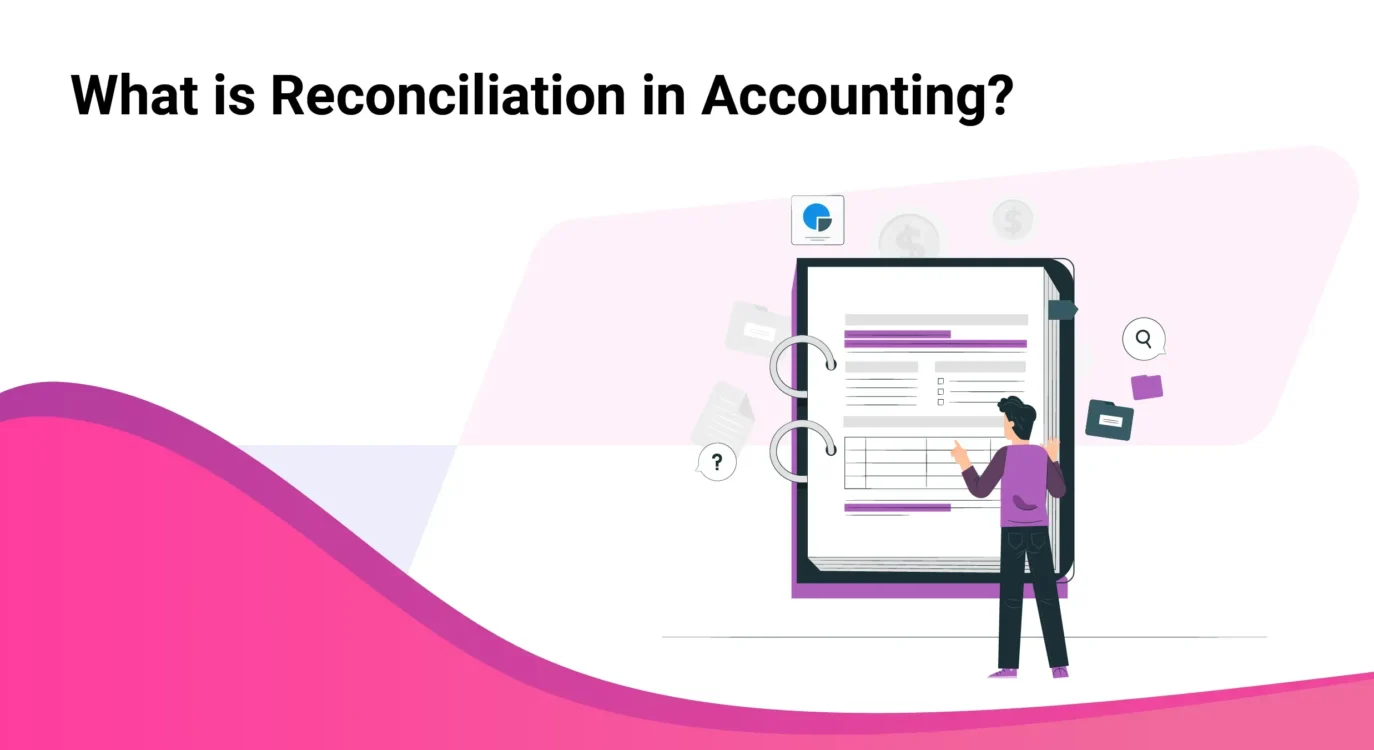Account Reconciliation: Why Accuracy Matters for Business Financial Health
In the world of business finance, there’s a crucial process that often operates behind the scenes but is absolutely vital for accuracy, compliance, and decision-making: Account Reconciliation. Whether you’re a growing logistics company, an Amazon DSP, a healthcare provider, or a small business in the USA, overlooking account reconciliation can cost you far more than you think. Late payments, missed deposits, accounting errors, or even fraud can go unnoticed without regular reconciliation. In this comprehensive guide, we’ll explore why account reconciliation is essential, how the process works, the types of reconciliations, and how small businesses can benefit from outsourcing or automating the task. What Is Account Reconciliation? Account reconciliation is the process of comparing two sets of financial records—usually your company’s internal books and external statements such as bank records—to ensure they match. If discrepancies exist, they’re identified, investigated, and corrected. For example, you might compare your internal ledger’s cash balance with your bank statement. If there’s a difference, it could be due to a timing delay, a bank fee, an error, or even a fraudulent transaction. This process helps maintain financial accuracy, detect issues early, and confirm that your business’s financial statements are trustworthy. Why Is Account Reconciliation So Important? 1. Detect and Prevent Errors Even minor data entry errors can lead to major misstatements. Reconciling accounts ensures that mistakes are caught and corrected before they impact financial reporting. 2. Reduce the Risk of Fraud Reconciliation helps detect unauthorized withdrawals, forged checks, or suspicious transactions. It creates transparency and provides a solid line of defense against internal or external fraud. 3. Maintain Cash Flow Accuracy Knowing exactly how much money is available in each account helps with budgeting, investments, and timely payments. You’ll avoid bounced checks, overdraft fees, or late payroll. 4. Prepare for Audits Regular reconciliation builds a clean, organized record trail that auditors can follow easily. This reduces audit time and increases confidence in your financial health. 5. Support Informed Decision-Making When your accounts are balanced, your financial reports reflect the true state of your business. This enables smarter decisions, from hiring to expansion planning. Types of Account Reconciliation There isn’t just one type of reconciliation—businesses typically perform several types depending on their operations. Here are the most common: 1. Bank Reconciliation The most frequent type, this matches your company’s cash ledger with your bank statement. It helps identify unrecorded bank fees, deposits in transit, or fraudulent charges. 2. Credit Card Reconciliation This compares your internal records of business expenses with the monthly credit card statement to ensure all charges are authorized and recorded correctly. 3. Vendor Reconciliation Compares your accounts payable ledger with supplier statements to ensure all purchases, credits, and payments are accounted for. 4. Customer Reconciliation Matches your accounts receivable ledger with customer payments and outstanding invoices. It ensures customers aren’t underpaying or overpaying. 5. Intercompany Reconciliation For businesses with multiple entities, this compares transactions between those entities to avoid duplicate entries or omissions. 6. General Ledger Reconciliation A broader approach that compares sub-ledgers (like AR, AP, inventory) with the general ledger to validate financial statement accuracy. Step-by-Step: How the Reconciliation Process Works Here’s how a basic reconciliation works, using bank reconciliation as an example: Step 1: Collect Statements Gather internal records (like your cash ledger) and external records (like your bank statement) for the same time period. Step 2: Match Transactions Line up debits and credits in your books with those on the bank statement. Mark items that match. Step 3: Identify Discrepancies Highlight mismatches such as: Deposits in transit Outstanding checks Bank fees not recorded Duplicate entries Fraudulent or unauthorized transactions Step 4: Investigate and Correct Research the cause of discrepancies. Adjust the internal records or contact the bank/vendor/customer if needed. Step 5: Document and Report Keep a detailed reconciliation report and summary. This serves as proof in case of an audit or future review. Common Reconciliation Challenges Faced by Small Businesses Small businesses in the USA often struggle with: Lack of time or staff to reconcile accounts regularly Incomplete or disorganized records No standardized reconciliation process Manual errors from Excel-based systems Delayed detection of fraud or misstatements These issues can lead to financial mismanagement, poor reporting, and compliance risks. How Often Should You Reconcile? Monthly reconciliation is the gold standard for most businesses. However, high-volume businesses may reconcile weekly or even daily, especially for cash and card transactions. At a minimum, businesses should reconcile: Bank accounts Credit card statements Payroll accounts Customer and vendor ledgers Loan and interest payments Benefits of Outsourcing Account Reconciliation Outsourcing to a professional accounting or virtual CFO service in the USA can relieve the burden from your internal team. Here’s why it’s a smart choice: 1. Accuracy and Efficiency Experts use automation and experience to reconcile accounts faster and with fewer errors. 2. Advanced Tools Outsourced providers often use cloud accounting platforms like QuickBooks, Xero, or NetSuite to automate and streamline reconciliation. 3. Time Savings Business owners can spend more time focusing on growth, not digging through spreadsheets. 4. Audit Readiness Your reconciliations are always ready for compliance checks or audits with proper documentation and support. 5. Cost-Effective Outsourcing is often cheaper than hiring full-time finance staff, especially for small and mid-sized businesses. Tips to Improve Your Reconciliation Process Use Accounting Software: Tools like QuickBooks Online or Xero can auto-import bank transactions and highlight mismatches. Schedule Regular Checks: Don’t wait for year-end to reconcile. Make it a monthly habit. Set Internal Controls: Limit access to financial data, separate duties, and set up approval workflows. Automate Where Possible: Many cloud tools now offer rule-based matching and AI-driven error detection. Maintain a Checklist: Use a monthly checklist to ensure nothing is missed. Who Needs Account Reconciliation the Most? Some business types are especially vulnerable to cash mismanagement and need rigorous reconciliation: Logistics and Transportation CompaniesConstant vendor payments, fuel charges, and driver reimbursements require tight controls. Retail and E-Commerce BusinessesMultiple daily transactions, refunds, and payment gateways make reconciling essential. Amazon DSPsManaging third-party payments, fuel advances, and incentives demands
Read MoreAccounting Reconciliation: 9 Essential Steps to Eliminate Errors and Save Time
If you’re running a business in the USA, you’ve probably heard the term accounting reconciliation tossed around during financial meetings or by your CPA. Sounds fancy, right? But truth be told, it’s one of the most foundational, yet underrated parts of your financial management. Imagine driving a car with a busted fuel gauge. You never really know how far you can go. That’s exactly what running a business without proper reconciliation feels like—you’re guessing your way through numbers. That’s risky, and it’s where accounting reconciliation steps in to save the day. Let’s break it down the right way—no confusing jargon, no accountant-only language. Just real, relatable info every U.S. business owner needs to know. What Is Accounting Reconciliation? Accounting reconciliation is the process of comparing financial records from different sources to ensure everything matches. According to Investopedia, reconciliation ensures consistency and accuracy across all your accounting records. Why Does It Matter So Much? Think of reconciliation as your business’s internal lie detector. It keeps your financial records honest, accurate, and IRS-ready. Without it, small mistakes can snowball into big financial messes. The Main Goal of Reconciliation Let’s not overcomplicate it. The goal is simple: Ensure your actual bank balance matches your book balance Catch errors, duplicates, or fraud Make sure your financial decisions are based on facts, not fiction Types of Accounting Reconciliation You Should Know For example, during bank reconciliation, you’re matching the transactions in your books with those listed in your bank statement. The U.S. Small Business Administration (SBA) explains how this helps detect errors and fraud. 1. Bank Reconciliation This is the most common one. You compare your business’s books to your monthly bank statement. Found a charge you didn’t authorize? Bank recon is how you catch it. 2. Credit Card Reconciliation Used to track all expenses made through your business credit cards. Helps detect fraud or unauthorized charges instantly. 3. Vendor or Supplier Account Reconciliation Ever been overbilled by a supplier? Reconciliation checks your purchase orders and what was actually received and paid. 4. Payroll Reconciliation Ensures what you paid in payroll matches your time logs, taxes withheld, and benefits owed. 5. Intercompany Reconciliation If your business has multiple entities or branches, reconciling intercompany transactions ensures clean consolidation. The Step-by-Step Reconciliation Process Step 1: Collect Your Records Grab your internal financial logs, bank statements, credit card statements, and receipts. Step 2: Compare Line by Line Check every entry. Does the amount in your books match the amount on the bank statement? Step 3: Investigate Discrepancies Found something off? Could be a double entry, a forgotten transaction, or an unauthorized charge. Step 4: Make Adjustments Once you know where the error is, update your records and make notes so future-you knows what happened. Why Monthly Reconciliation Is a Must (Not a Maybe) Waiting until year-end is a rookie mistake. Reconcile monthly to: Catch errors early Stay compliant Avoid tax penalties Have accurate reports for decision-making Manual vs. Automated Reconciliation Manual Reconciliation Good ol’ Excel sheets, calculator, and coffee. Works for small businesses, but can get tedious and error-prone. Automated Reconciliation Tools Tools like QuickBooks, Xero, and NetSuite automatically match transactions, flag issues, and generate reports. Saves time and sanity. Benefits of Regular Accounting Reconciliation ✅ Protects against fraud ✅ Keeps your financial reports clean ✅ Helps you budget better ✅ Prepares you for audits ✅ Builds trust with investors and banks Red Flags That You’re Not Reconciling Properly Your books are “off” but you’re not sure why You’re always surprised by your cash flow You’re paying overdraft fees regularly Vendors complain about underpayments Your accountant looks worried every tax season Top Tools for Reconciliation in the USA QuickBooks Online – For small to mid-sized businesses Xero – Simple interface, great automation FreshBooks – Perfect for freelancers and contractors BlackLine – Enterprise-grade automation Oracle NetSuite – Scalable and powerful for large teams Internal Controls That Support Reconciliation Reconciliation works best with strong internal controls: Segregation of duties: The person making payments shouldn’t reconcile accounts Approval workflows for expenses Digital audit trails for every transaction Common Reconciliation Challenges Timing Differences Your bank might process a payment later than you recorded it. It’s normal—just note it down. Duplicate Transactions Entering the same invoice twice? Happens more often than you think. Human Error Typos, wrong dates, missing entries—they can all throw your books out of balance. Mistakes to Avoid Ignoring small discrepancies (“It’s just $3, who cares?”—bad mindset) Not reconciling regularly Failing to save documentation Using multiple, unlinked systems Relying too heavily on memory How Reconciliation Prepares You for Audits When the IRS (or your investors) come knocking, you’ll need: Clear books Transaction history Proof of compliance Reconciliation makes this a breeze instead of a breakdown. Outsourcing Reconciliation: Smart or Risky? Outsourcing to professionals can be a game-changer, especially if: You’re not a numbers person You want to focus on growth You need help with compliance Just make sure to pick a trusted, U.S.-based service with cloud access and strong security. The Real Value of Reconciliation in 2025 As digital payments grow and businesses scale faster, real-time financial clarity is gold. Accounting reconciliation isn’t just about fixing mistakes—it’s about running smarter, faster, and safer. If you’re not reconciling regularly, you’re basically flying blind. And no pilot wants to find out they’re low on fuel at 30,000 feet.
Read More

